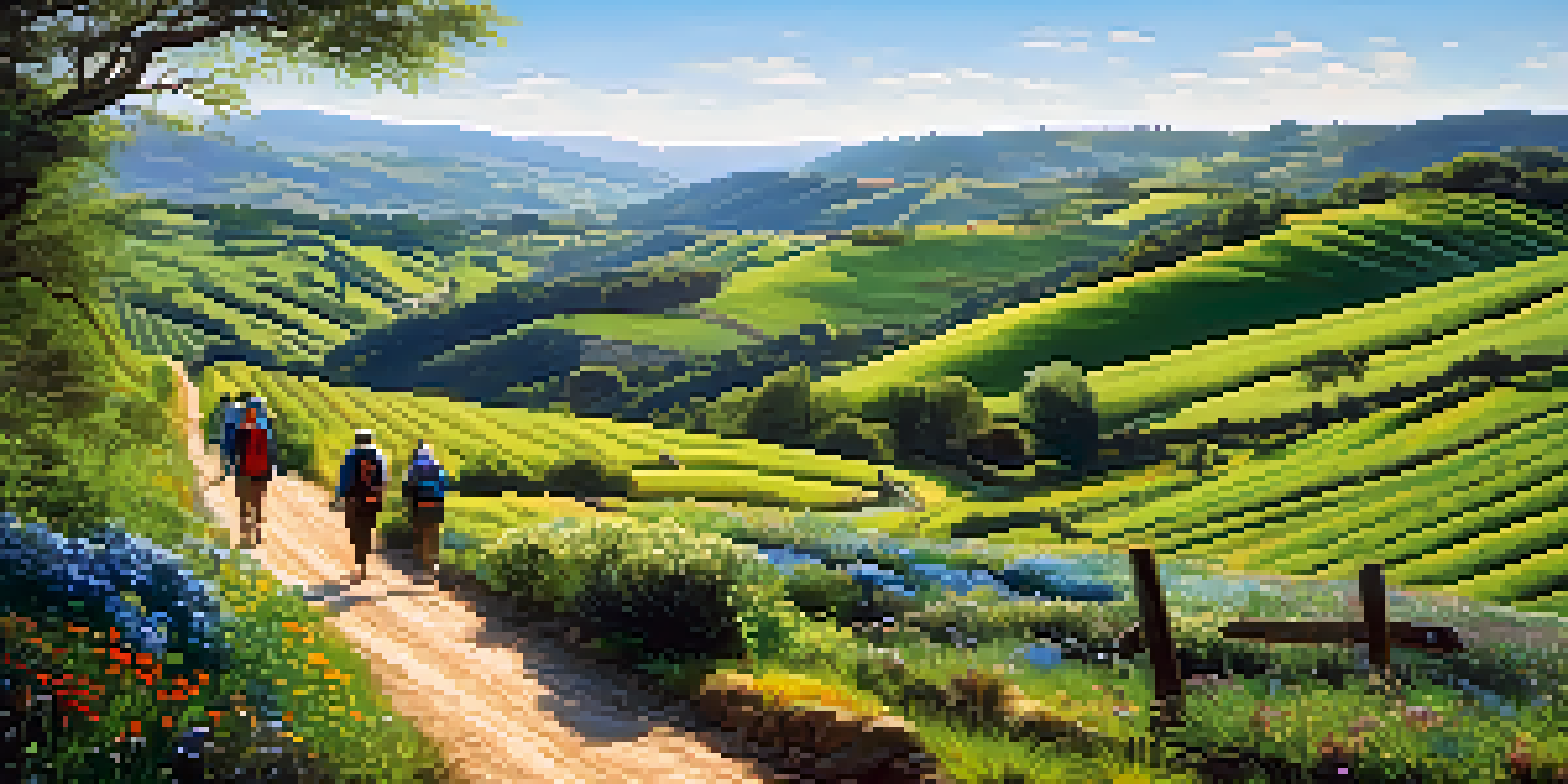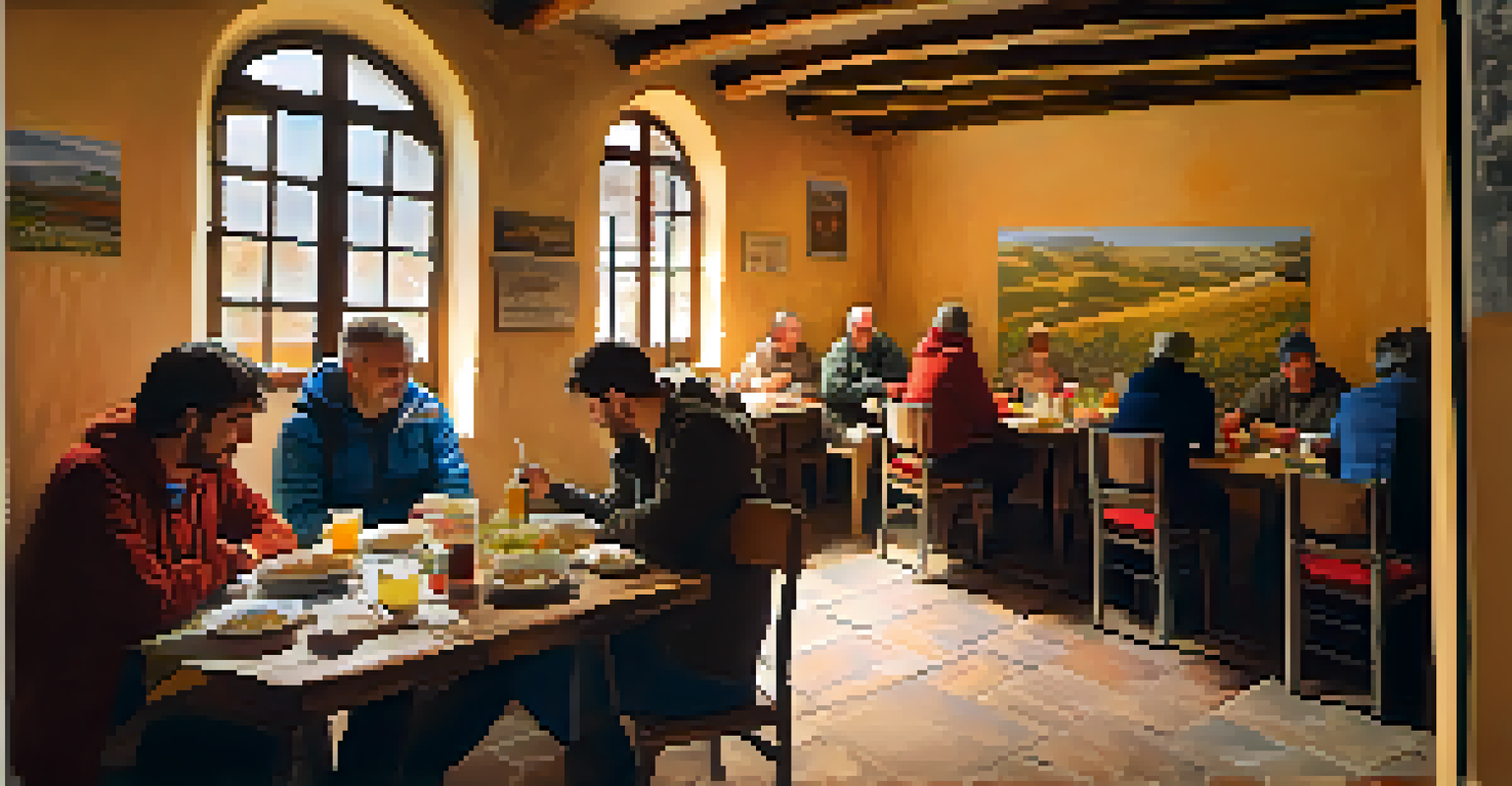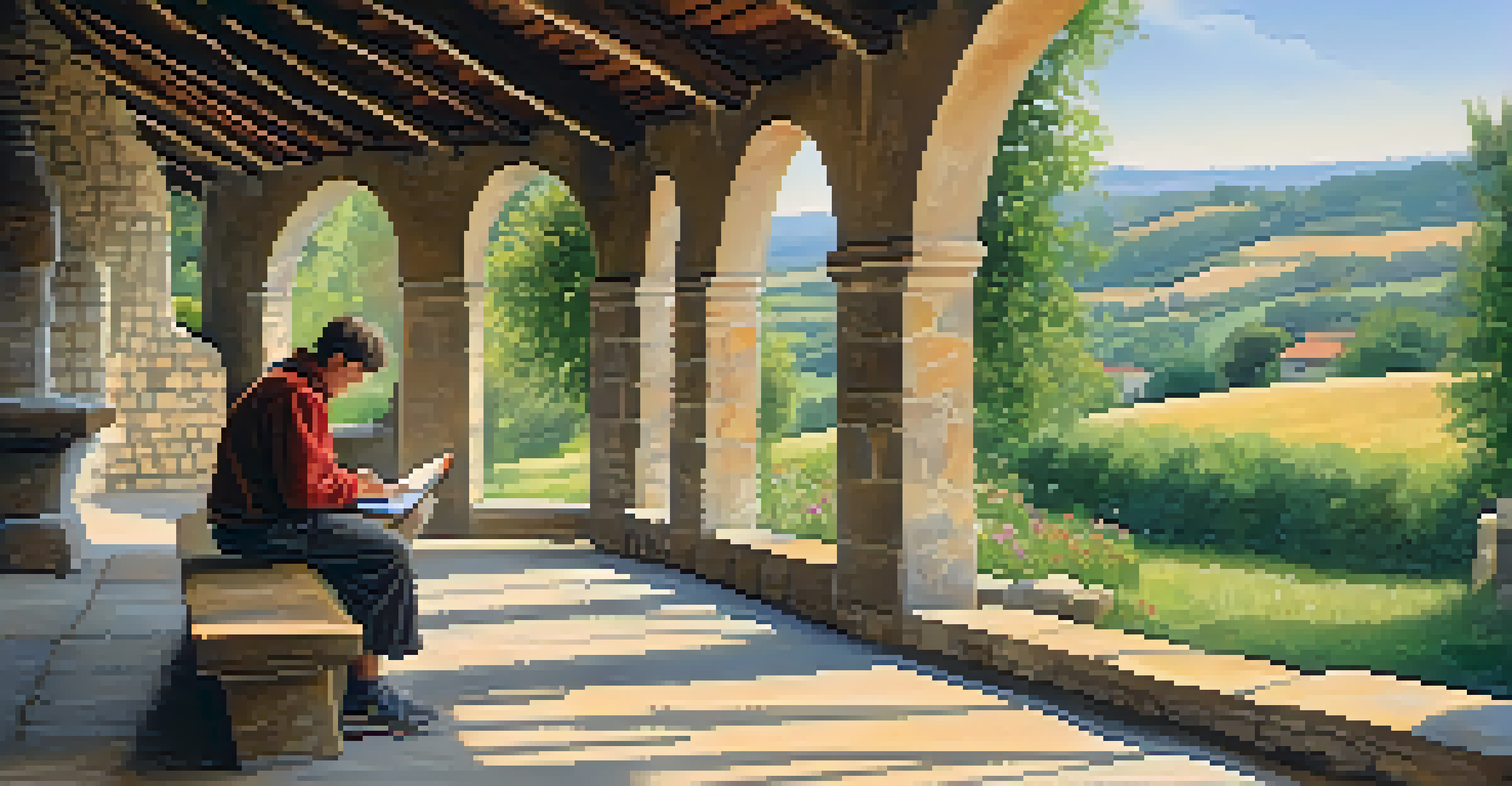Exploring the Camino de Santiago: A Spiritual Journey

What is the Camino de Santiago and Its Significance?
The Camino de Santiago, or the Way of St. James, is a network of ancient pilgrimage routes leading to Santiago de Compostela in Spain. For centuries, it has attracted pilgrims seeking spiritual growth, adventure, and a sense of community. Walking this path is not just about reaching a destination; it's about the journey itself and the reflections it inspires along the way.
The journey of a thousand miles begins with one step.
The legend holds that the remains of St. James, one of Jesus' apostles, are buried in Santiago. This historical significance adds a layer of depth for those who walk the Camino, inviting them to connect with centuries of faith and tradition. It's a spiritual journey that resonates with people from all walks of life, regardless of their religious beliefs.
Each year, thousands embark on this pilgrimage, drawn by its promise of transformation. The diverse landscapes, from rolling hills to bustling towns, offer a backdrop for introspection and personal growth. Whether you're seeking solace, adventure, or a deeper understanding of yourself, the Camino provides an environment conducive to all of these experiences.
The Various Routes of the Camino de Santiago
There are several routes that make up the Camino de Santiago, each with its unique charm and challenges. The most popular is the Camino Francés, starting in the Pyrenees and stretching over 780 kilometers. It's well-marked and offers a mix of stunning landscapes and vibrant towns, making it an excellent choice for first-time pilgrims.

Other routes, like the Camino Portugués and the Camino del Norte, offer different experiences. The Portuguese Way is known for its beautiful coastal views, while the Northern Way takes you through rugged terrain and charming fishing villages. Each path tells its own story, revealing the rich cultural heritage of the regions you traverse.
Camino de Santiago's Spiritual Journey
The Camino de Santiago invites pilgrims to embark on a deeply personal spiritual journey that fosters introspection and connection.
Choosing the right route depends on your preferences and physical abilities. Some may prefer a more tranquil journey, while others might be drawn to the bustling atmosphere of the Camino Francés. Regardless of the route you choose, each step you take brings you closer to the heart of the pilgrimage experience.
Preparing for Your Camino Journey
Preparation is key to a successful Camino experience. Start by researching which route aligns with your goals and physical readiness. Consider factors like the distance you’re comfortable walking daily, the terrain, and the climate. Having a solid plan in place will set you up for success and help you fully enjoy the journey.
It's not about the destination, it's about the journey.
Packing wisely is another crucial aspect of preparation. Lightweight gear, comfortable walking shoes, and weather-appropriate clothing are essential. Don't forget to include a journal or a sketchbook to document your thoughts and experiences along the way; many pilgrims find this reflective practice enhances their spiritual journey.
It's also beneficial to train physically before hitting the trail. Regular walks, especially with a backpack, can help build your stamina. The more prepared you are, the more you can focus on the spiritual and emotional aspects of the pilgrimage, rather than physical discomfort.
The Spiritual Aspects of the Camino
Walking the Camino de Santiago is often described as a spiritual journey, regardless of one's religious background. Many pilgrims find that the rhythm of walking allows for deep introspection and a connection to something greater than themselves. The quiet moments spent on the trail can lead to profound insights and a sense of peace.
Spirituality on the Camino is personal; for some, it may involve prayer and reflection, while for others, it might be about connecting with nature or the community of fellow travelers. The experience can evoke feelings of gratitude, humility, and a renewed perspective on life. The simple act of putting one foot in front of the other becomes a meditative practice.
Diverse Routes Offer Unique Experiences
With various routes like the Camino Francés and Camino Portugués, each path provides distinct landscapes and cultural insights.
Additionally, the Camino is dotted with churches, chapels, and historical sites that invite moments of contemplation. Whether you stop to light a candle or simply enjoy the serene surroundings, these spots provide opportunities to pause and reflect on your journey, enhancing the spiritual experience.
The Community and Camaraderie of Pilgrims
One of the most enriching aspects of the Camino de Santiago is the sense of community among pilgrims. As you walk, you’ll meet fellow travelers from around the world, each with their unique stories and reasons for undertaking the journey. This shared experience fosters a sense of camaraderie that can be both uplifting and comforting.
Many pilgrims find that the conversations shared over a meal or during a rest break become cherished memories. The bonds formed on the trail often lead to lasting friendships, as people come together to support and encourage one another. It's a reminder that we are all connected in our journeys, both on and off the trail.
Furthermore, the communal spirit extends to albergues (hostels) where pilgrims stay. These spaces are designed for sharing experiences, laughter, and sometimes even tears. The collective energy and support found within these walls can make the challenges of the Camino feel more manageable.
Challenges and Triumphs Along the Path
While the Camino de Santiago offers a beautiful journey, it's important to acknowledge that it comes with its challenges. From blisters to fatigue, every pilgrim faces obstacles at some point along the way. However, these challenges often become the stories we tell and the lessons we learn, ultimately enriching the experience.
Each hurdle can be viewed as a stepping stone towards personal growth. Overcoming discomfort or fatigue can lead to a sense of accomplishment that boosts your confidence and resilience. The triumphs, whether small or significant, provide a powerful sense of achievement that stays with you long after the journey ends.
Community and Camaraderie Among Pilgrims
The shared experiences along the Camino cultivate a strong sense of community, forming lasting friendships among travelers.
Ultimately, the challenges faced along the Camino mirror life itself—filled with ups and downs, moments of doubt, and bursts of joy. Embracing these experiences fosters a deeper understanding of oneself and a greater appreciation for the journey, both on the Camino and in everyday life.
The Lasting Impact of the Camino Experience
Completing the Camino de Santiago can leave a profound impact on pilgrims, often altering their perspectives on life. Many find that the journey helps clarify their priorities, instilling a sense of purpose and direction that persists long after they’ve returned home. The lessons learned and the connections made can resonate for years to come.
Pilgrims often report a renewed appreciation for simplicity and mindfulness, applying these insights to their daily lives. The experience encourages a slower pace, inviting individuals to savor each moment rather than rush through life. This newfound awareness can foster a deeper connection with oneself and the world around them.

In essence, the Camino becomes a metaphor for life’s journey, where the path taken and the experiences encountered shape who we are. Whether you walk for spiritual reasons, personal growth, or adventure, the Camino de Santiago offers a rich tapestry of experiences that can inspire and transform.